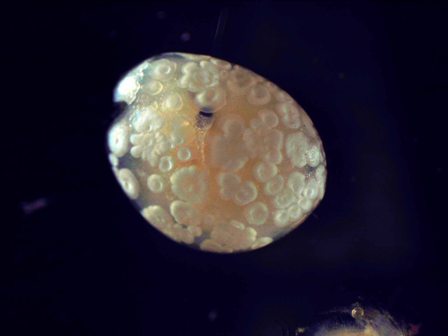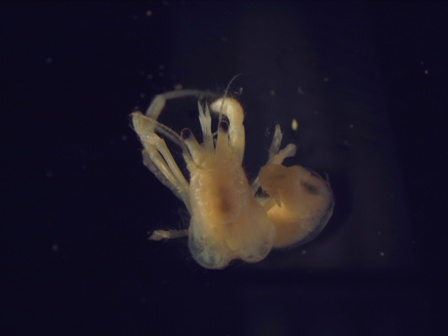|
|
CrustaceaCrustaceans (crustacea) are a large group of arthropods which includes crabs, lobsters, crayfish, shrimp, krill and barnacles. Similarly to other arthropods, crustaceans have an exoskeleton which they must moult in order to grow. Crustaceans are unique, however, as they possess biramous (branched) limbs. They can be further distinguished from other families of arthropod by their larval forms.
Crabs are usually found in saline wetlands of the coasts, but can live in freshwater systems, e.g. Holthuisana spp. Freshwater crayfish (Cherax—yabbies, Euastacus—spiny crayfish, and Tenuibranchiurus—swamp crayfish) are more typical in non-estuarine areas. They occur in habitats up to 1000m above sea level from coastal swamps in wallum to rocky streams in rainforests. Other freshwater crustaceans include atyid shrimps, e.g. Caridina spp., and palemonid prawns, e.g. Macrobrachium spp. Microcrustaceans
Freshwater microcrustaceans include ostracods, copepods and cladocerans. These hardy animals can be found in a range of extreme environments, where larger invertebrates might not survive. This can include small ephemeral pools in outback locations where microcrustacean eggs can remain viable for decades, or even hundreds of years[1], in the sediment until the area is next inundated. These animals can be found in nearly any waterbody, with most species to be found in the littoral zone of waterbodies in wetlands. Additional informationTo find out more about species in your area, see WetlandSummary. For specific information on wetland species sightings, visit WetlandMaps or Wildlife Online.
References
Last updated: 24 February 2016 This page should be cited as: Department of Environment, Science and Innovation, Queensland (2016) Crustacea, WetlandInfo website, accessed 8 May 2025. Available at: https://wetlandinfo.des.qld.gov.au/wetlands/ecology/components/biota/fauna/fauna-taxon/invertebrates/arthropoda/crustacea.html |

 — Department of the Environment, Tourism, Science and Innovation
— Department of the Environment, Tourism, Science and Innovation


